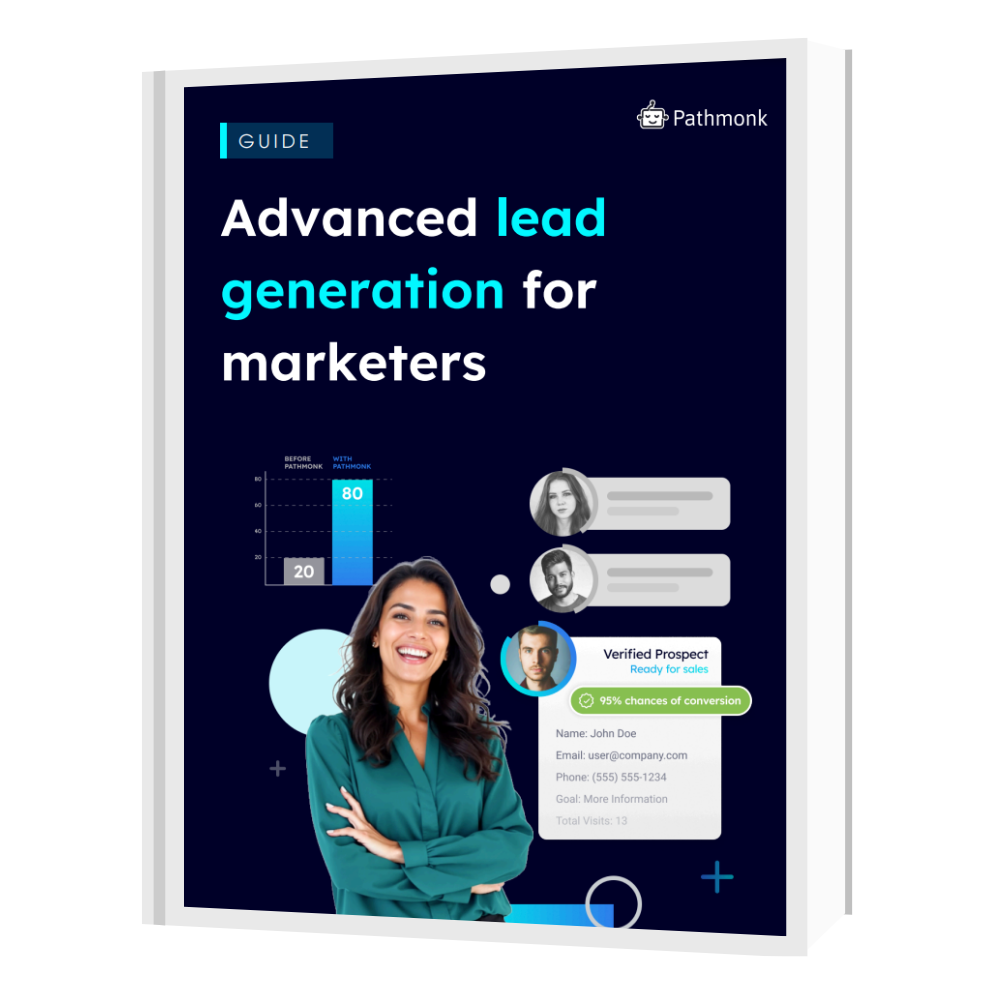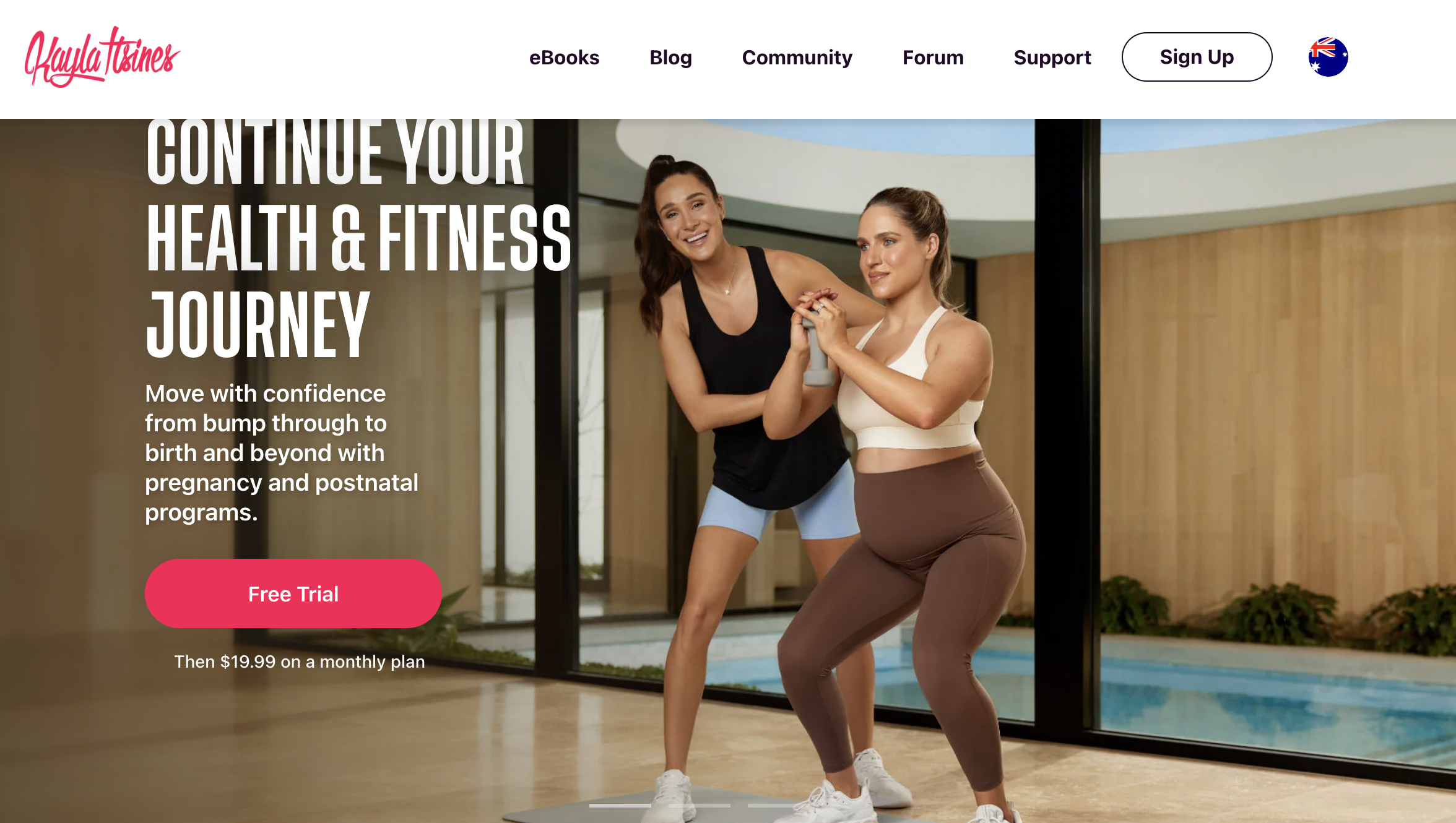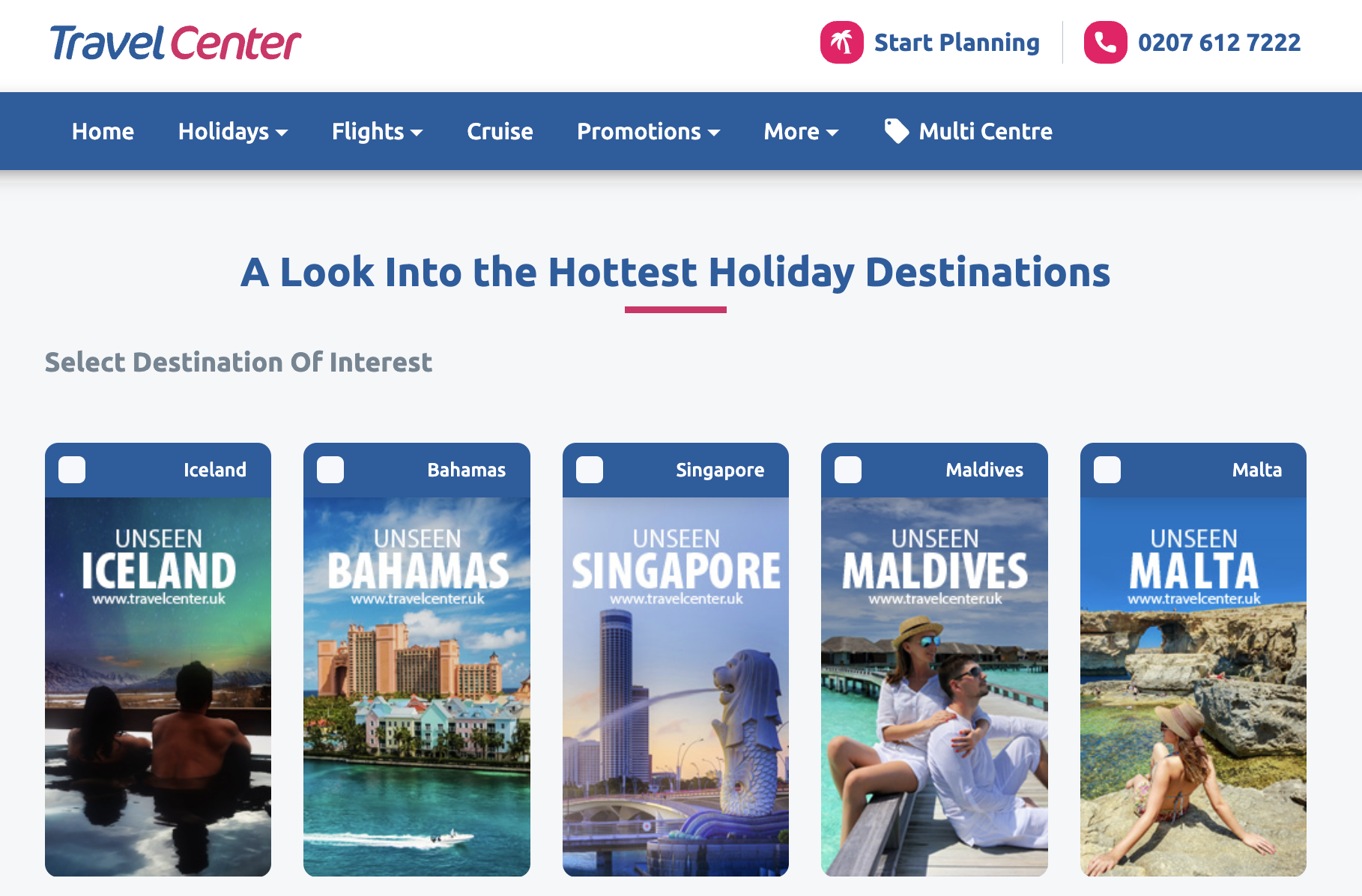
As someone who likes blending marketing into everyday scenarios, I liken a lead magnet to asking for someone’s number at a club. If you think I’m kidding, think again: much like sparking a connection that compels someone to share their phone number after a great conversation, a lead magnet is about making that initial enticing offer that motivates people to hand over their personal details.
However, B2C companies encounter unique challenges in creating effective lead magnets. Unlike B2B organizations, where decisions often require detailed information and involve several stakeholders, B2C relies more on emotional appeal and the promise of instant gratification. Effective B2C lead magnets, like flash sales or exclusive previews, need to be immediate and captivating, appealing directly to personal desires and benefits.
If you’re a B2C marketer aiming to sync better with your audience, consider how to make your offerings irresistible. Are they looking for convenience, fun, or perhaps a sense of community? Your lead magnets should reflect these desires in a compelling package that promises real value.
So, let’s dive into some strategies that can help you hone your approach and ensure your lead magnets capture your audience’s hearts.
Table of Contents
Understanding Your B2C Audience to Cater to Consumer Desires
To effectively engage your audience, you first need to deeply understand their needs, preferences, and motivations. This understanding will inform your strategy for creating lead magnets that resonate deeply with potential customers.
There’s several ways you can do this:
- Conduct market research: Utilize surveys, focus groups, and market research to gather data about your audience’s demographics, interests, and behavior. Tools like Pathmonk Intelligence will also provide insights into what content your audience consumes, their online behavior, and their purchasing habits.
🎁 Free resource: Focus Group Guide: +150 Questions for Market Research
- Customer feedback: Actively seek feedback from current customers through reviews, customer support interactions, and direct outreach like email surveys. Listening to existing customers gives you a clear picture of what aspects attract them to your products or services and can indicate what potential customers might also appreciate.
- Social listening: Monitor social media channels for mentions of your brand, competitors, and keywords related to your industry. Social listening tools can help you catch unfiltered consumer opinions and emerging trends, providing real-time insight into consumer desires and pain points.
- Persona development: Compile your research into buyer personas—detailed profiles of your ideal customers that include their needs, goals, and behavior patterns. These personas help you visualize who you’re marketing to and tailor your lead magnets accordingly.
🎁 Free resource: Customer Persona Template
- Competitor analysis: Look at what types of lead magnets competitors are offering and how well they are received. Understanding what works (and doesn’t work) in your market can help you refine your approach.
🎁 Free resource: Competitor Analysis Framework & Template
Once you have a solid understanding of what your audience wants, you can tailor your lead magnets to align with these desires effectively.
A few tips for you to take into account before we start with the fun part:
- Match incentives with interests: If your research shows that your audience values convenience, your lead magnets should reflect this by offering solutions that simplify their lives, such as time-saving tools or products. If entertainment is a priority, consider engaging content like interactive videos or access to exclusive entertainment content.
- Use personalization: Utilize data from user interactions and behaviors to personalize lead magnets. For example, if a visitor spends time on a specific product page, offer them a related freebie or discount as a lead magnet through targeted pop-ups or email marketing.
- Create community: If there is a strong desire for community among your target audience, design lead magnets that bring people together. This could be access to an exclusive online group, invitations to local events, or the opportunity to be part of a beta testing group for new products.
- Educational content for thought leadership: When your audience values expertise and information, provide ebooks, webinars, or access to exclusive research papers as lead magnets. Positioning your brand as a knowledgeable authority can fulfill an educational need while nurturing trust and credibility.
- Reward engagement: Develop lead magnets that reward users for their engagement. For example, offering points or credits towards purchases for actions like referring friends or posting reviews aligns with a desire for validation and rewards.
Generate better leads to grow your sales
Discover new strategies to unlocking a flood of high-quality leads from your website.

Best Types of B2C Lead Magnets
As we’ve just seen, choosing the right lead magnet depends heavily on understanding your audience and what they find valuable.
These, however, are some of the best-performing types of lead magnets for B2C companies looking to improve their lead generation effectiveness. Time to start brainstorming! 😄
1. Exclusive Discounts and Coupons
Exclusive discounts and coupons are straightforward incentives offered to consumers in return for their contact information or other forms of engagement, such as signing up for a newsletter or creating an account. These offers can range from percentage discounts, dollar amount off, free shipping, to buy-one-get-one-free deals.

Why it works: Discounts and coupons directly appeal to a consumer’s innate desire to save money, making them highly effective for driving quick conversions. They tap into the psychological phenomenon known as “loss aversion,” where the potential of losing out on a great deal outweighs the perceived risk of sharing personal information.
By offering a tangible benefit, you not only make the purchase decision easier but also create a positive first interaction with your brand, which can lead to increased loyalty and repeat purchases.
Best practices:
- Substantial value: The discount should be compelling enough to motivate action. Minor discounts might not be enough to persuade consumers to share their details, so offer something that feels like a significant savings or advantage.
- Create FOMO: Limit the offer by time (e.g., “24-hour flash sale”) or availability (e.g., “while supplies last”) to compel immediate action. This urgency mimics the high-stakes environment of a limited-time sale, increasing the likelihood that consumers will act quickly to not miss out.
- Segment and personalize: To increase the effectiveness of your offers, segment your audience based on their behavior or purchase history and tailor the discounts accordingly. For example, offer larger discounts to first-time visitors to encourage first purchases, while smaller, loyalty discounts can be targeted at repeat customers.
2. Free Trials and Samples
Free trials and samples are promotional tactics used to introduce potential customers to a product or service by offering them a chance to try it at no cost for a limited period or through a limited quantity sample. This approach is prevalent in industries ranging from digital services and software to cosmetics and food.

Why it works: Offering free trials or samples effectively reduces the consumer’s perceived risk. By eliminating the financial barrier, companies encourage more people to try their products or services. This strategy relies on the principle that once customers experience the benefits of a product firsthand, they’re more likely to make a purchase.
Additionally, it builds trust between the consumer and the brand, as the company shows confidence in the quality of what they’re offering, suggesting that the full product or continued service will be worth the price.
Best practices:
- No credit card requirement: Whenever possible, avoid requiring a credit card for free trials. This removes a significant barrier for consumers wary of automatic subscription renewals.
- Seamless upgrade options: As the trial or sample nears its end, offer an easy option to convert to a full purchase. This might be through a special discount for trial users or a simple upgrade button within the product.
- Personalized offers: Based on the usage patterns during the trial, provide personalized offers that cater specifically to the user’s needs and interests.
- Request feedback: Whether or not the trial leads to a purchase, gather feedback. This information can be invaluable in understanding why some trials convert and others do not and can help improve the product and the trial experience itself.
3. Giveaways and Contests
Giveaways and sweepstakes are promotional strategies where participants enter a contest with the chance to win prizes. These contests are typically hosted by brands as a means to engage customers and gather contact details, such as email addresses, which can be used for future marketing campaigns.
Why it works: The appeal of giveaways lies in the basic human excitement associated with the possibility of winning something valuable or desirable. This excitement motivates people to participate, which involves minimal effort for a potentially high reward.
Moreover, the allure of winning encourages participants to share the contest with friends and family, thereby organically increasing the reach and impact of the campaign.
Best practices:
- Relevant prizes: Ensure that the prizes offered are desirable and relevant to your target audience. This relevance ensures that participants are not just attracted to the prize, but are also genuine prospects for your brand. For instance, a tech gadget might be a perfect prize for a tech company, but not necessarily for a beauty brand.
- Social sharing incentives: Encourage participants to share the contest on their social networks by offering additional entries for sharing. This not only increases engagement but also leverages participants’ networks for greater organic reach.
- Collaborate with influencers: Partner with influencers who can promote the giveaway to their followers. Choose influencers whose audience aligns with your target demographic to ensure the right reach.
- Cross-promotion with brands: Team up with other brands to co-host the giveaway, which can mutually benefit all parties by broadening the audience base and sharing the logistical costs.
4. E-books, Guides, and Educational Content
E-books, guides, and other forms of educational content are comprehensive, high-value resources offered typically in downloadable formats like PDFs. These materials can cover a wide range of topics related to a company’s products or industry, providing in-depth information, tutorials, tips, or insights that are not as easily communicated through shorter content forms like blog posts or articles.

Why it works: Offering educational content as a lead magnet is effective because it delivers direct value to the audience through practical knowledge and decision-making support. By sharing expertise, a brand establishes itself as a thought leader, enhancing its credibility.
Furthermore, providing valuable information for free builds trust with prospective customers, showing that the brand is committed to more than just making sales—it’s dedicated to genuinely helping its audience.
Best practices:
- Address customer pain points: The content should be tailored to address specific challenges or questions your audience faces. Conduct audience research to understand these pain points and develop content that provides clear, actionable solutions.
- Professional presentation: Ensure the content is well-written, professionally edited, and formatted. Include engaging visuals like charts, graphs, and images to break up text and enhance understanding.
- Leverage multiple promo channels: Promote your educational content across various channels where your audience is most active. This includes your company’s blog, email newsletters, social media platforms, and even through guest posts on other relevant blogs.
- SEO optimization: Optimize the landing pages for your e-books and guides using relevant keywords to improve their visibility in search engine results. This can drive organic traffic to your content.
- Easy access: Simplify the download process. Require minimal information (like just an email address) to access the content, reducing barriers for users.
5. Early Access or Pre-orders
Early access or pre-order campaigns allow customers to purchase products or secure services before they are officially available to the general public. This strategy is commonly used for the launch of new products, special editions, or exclusive collections. It serves not only to generate initial sales but also to gauge customer interest and manage inventory effectively.
Why it works: Early access or pre-orders tap into several powerful psychological triggers:
- Exclusivity: Customers feel part of an elite group that receives benefits or products unavailable to the general audience, which enhances their loyalty and satisfaction.
- Urgency: The limited time frame to access something new compels customers to act quickly, increasing the impulse to purchase.
- Anticipation: The wait between pre-ordering and receiving the product builds anticipation, which can enhance the user’s perception of value.
Best practices:
- Segmented alerts: Utilize email marketing to inform existing customers about early access opportunities. Segment your email list to target users based on past purchases or expressed interests that align with the new offering.
- Clear and exciting announcements: Use engaging and clear language in your emails to announce early access or pre-orders, highlighting the exclusivity and limited nature of the offer.
- Rewarding early adopters: Offer special perks to early adopters, such as discounted pricing, additional features, or complementary products. These rewards not only incentivize early orders but also enhance customer loyalty.
6. Webinars and Live Events
Webinars and live events are structured gatherings, either online or in-person, where hosts and guests discuss topics of interest relevant to a specific audience. These events can range from educational workshops, product demonstrations, industry discussions, to entertainment events, all designed to engage directly with attendees.
Why it works: The effectiveness of webinars and live events in lead generation is due to their ability to facilitate real-time interaction between the brand and potential customers, enhancing engagement and fostering relationships. These events provide valuable information or unique experiences, positioning the brand as a credible authority and building trust among participants.
Additionally, they create a sense of community among like-minded individuals, which can boost brand loyalty and encourage word-of-mouth marketing.
Best practices:
- Choose relevant and engaging topics: Given the saturation of the webinar market since the pandemic, it’s crucial to identify topics that not only showcase your brand’s expertise but also resonate with the current interests of your target audience.
- Find expert speakers: Collaborate with industry experts, thought leaders, or influencers who can draw crowds and enrich the content with their knowledge and insights. Their reputation can lend credibility to the event and attract a larger audience.
- Follow-up strategy: Send a thank you email to all attendees shortly after the event. Include a survey or feedback form to gather insights on their experience. Encourage further engagement by offering attendees exclusive discounts or early access to products or services discussed during the event.
7. Templates and Useful Assets
Practical, ready-to-use tools that businesses can include a variety of resources such as downloadable templates (like budget planners, meal planners, or resume templates), checklists (for travel packing, wedding planning, etc.), or even toolkits compiling several resources.
These assets are designed to provide immediate utility and can be tailored to fit a wide range of needs within different niches.
Why it works: These assets work effectively as lead magnets because they offer immediate and tangible value to users. They help simplify tasks, save time, or solve common problems, making them highly desirable. By providing a resource that users can apply in their personal or professional lives right away, brands can establish a direct connection with their audience’s day-to-day activities.
Moreover, these practical tools can also help users achieve small wins, which enhances their perception of the brand and builds loyalty.
Best practices:
- High-quality and customizable content: Ensure that the templates or assets are of high quality and, where possible, customizable. This allows users to tailor the resource to their specific needs, increasing its value and usability. Design these tools with professionalism and brand consistency in mind, reinforcing your brand’s identity and values with every interaction.
- Clearly define use cases: Outline the benefits and potential uses of the templates or assets in your marketing materials. Helping users understand how they can apply these tools in their contexts can significantly boost engagement and downloads. Include examples or case studies showing how the templates have been successfully implemented, which can inspire confidence and stimulate ideas for usage.
Pathmonk Accelerate: AI-Powered Personalized Lead Magnets
Pathmonk Accelerate is an innovative AI-powered engine designed to enhance the effectiveness of websites in converting visitors into leads by leveraging advanced intent data analysis.
This technology meticulously analyzes the behavior of website visitors to predict their next most likely actions. Based on this prediction, it dynamically presents the most appropriate lead magnet to maximize engagement and conversion probabilities.
Increase +180%
leads
demos
sales
bookings
from your website with AI
Get more conversions from your existing website traffic delivering personalized experiences.

These personalized interactions can range from offering instant discount codes to visitors who show intent towards specific products, to providing pop-up invitations for exclusive webinars that relate directly to the content the user is currently viewing. Pathmonk Accelerate can also prompt users to download a specially tailored eBook or guide based on their browsing patterns and previous interactions on the site, ensuring the lead magnet aligns perfectly with their interests and needs at that moment.
This is why Pathmonk Accelerate is a game-changer in lead generation:
- AI-powered personalization: Pathmonk Accelerate utilizes advanced AI algorithms to analyze visitor intent data in real-time. This allows it to predict a visitor’s next most likely action with a high degree of accuracy. By understanding these behaviors, Pathmonk can deliver highly personalized interactions that are more likely to convert, adapting dynamically as user behavior changes over the course of their visit.
- Automatically generated experiences: Pathmonk Accelerate allows marketers to focus on other critical areas of their business by automating the optimization process. The AI continually learns and adjusts its strategies based on ongoing data analysis, meaning it improves over time without manual intervention, thus reducing the workload on marketing teams and minimizing the scope for human error.
- Cookieless technology: In an era where privacy concerns are paramount, and regulations like GDPR and CCPA dictate the digital marketing landscape, Pathmonk Accelerate offers a significant advantage by operating without the need for cookies. This not only ensures compliance with privacy laws but also positions the tool as a future-proof solution that respects user privacy while still delivering powerful lead generation capabilities.
- Optimization of existing traffic: Unlike other tools that may require significant adjustments to marketing strategies or additional traffic generation efforts, Pathmonk Accelerate focuses on maximizing results from existing traffic. This means that businesses can enhance their ROI more efficiently by converting a higher percentage of their current visitors into leads, without necessarily increasing their visitor numbers.
- Enhanced user experience: By providing timely and relevant interactions that align with the individual user’s intent and context, Pathmonk Accelerate improves the overall user experience on a website. This relevance not only boosts the likelihood of conversion but also enhances the brand’s reputation, contributing to higher customer satisfaction and loyalty.
Multiply your results too
Implement Pathmonk now and boost your conversions. Our plans are scalable, based on your monthly pageviews





